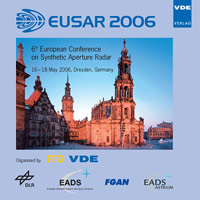Impact of the Ionosphere on an L-band Space Based Radar
Conference: EUSAR 2006 - 6th European Conference on Synthetic Aperture Radar
05/16/2006 - 05/18/2006 at Dresden, Germany
Proceedings: EUSAR 2006
Pages: 4Language: englishTyp: PDF
Personal VDE Members are entitled to a 10% discount on this title
Authors:
Chapin, Elaine; Chan, Samuel F.; Chapman, Bruce D.; Chen, Curtis W.; Martin, Jan M.; Michel, Thierry R.; Muellerschoen, Ronald J.; Pi, Xiaoqing; Rosen, Paul A. (Jet Propulsion Laboratory, California Institute of Technology, USA)
Abstract:
We have quantified the impact that the ionosphere would have on a L-band interferometric Synthetic Aperture Radar (SAR) mission using a combination of simulation, modeling, Global Positioning System (GPS) data collected during the last solar maximum, and existing spaceborne SAR data. We conclude that, except for high latitude scintillation related effects, the ionosphere will not significantly impact the performance of an L-band InSAR mission in an appropriate orbit. We evaluated the strength of the ionospheric irregularities using GPS scintillation data collected at Fairbanks, Alaska and modeled the impact of these irregularities on azimuth resolution, azimuth displacement, peak sidelobe ratio (PSLR), and integrated sidelobe ratio (ISLR). Although we predict that less than 5% of auroral zone data would show scintillation related artifacts, certain sites imaged near the equinoxes could be effected up to 25% of the time because the frequency of occurrence of scintillation is is a strong function of season and local time of day. Our examination of ionospheric artifacts observed in InSAR data has revealed that the artifacts occur primarily in the polar cap data, not auroral zone data as was previously thought.


